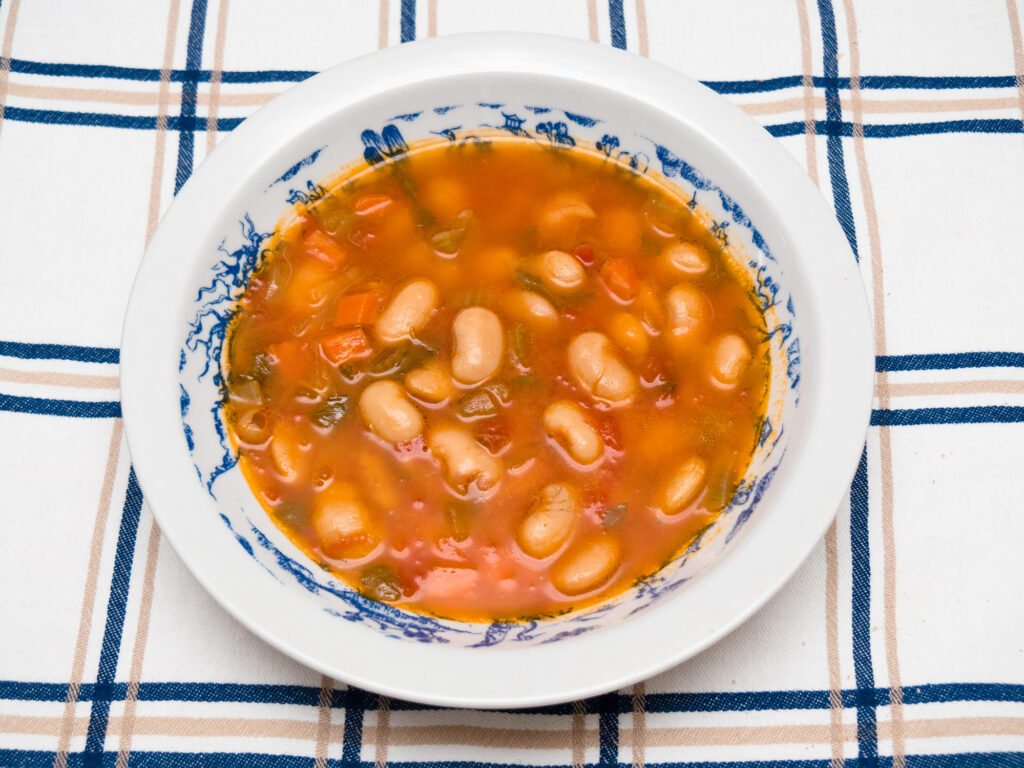Exploring the origins of popular Greek food. This week, it’s moussaka.
Moussaka fresh out of the oven, with its crispy topped béchámel coating, has a way of making you hungry at first sight. This iconic Greek comfort food is arguably Greece’s most famous traditional dish – you’ll be hard-pressed to find a taverna that doesn’t serve it, or a household that doesn’t make it for special occasions . Sometimes called Greece’s answer to lasagna along with Pastitio (with eggplant in place of pasta), but moussaka has its own unique identity and flavor. Ever wonder how it got its name? Let’s dig into the delicious history behind this hearty meal.

Origins and Name
Moussaka’s story actually begins outside of Greece. Food historians trace its roots to the Arab world, and even the name moussaka comes from an Arabic word. It likely derives from musaqqa‘a, meaning “chilled,” hinting at how early versions of the dish were served cold . Long before the rich casserole we know today, there were Middle Eastern versions of moussaka: simple combinations of eggplant and spiced meat (often lamb) cooked in tomatoes, usually without any dairy on top . As this culinary idea traveled through the Ottoman Empire into the Balkans and Greece, it picked up local twists and ingredients, slowly evolving toward the form we recognize.
A 1920s Greek Makeover
The moussaka we know and love – those decadent layers capped with creamy béchamel – is actually a 20th-century innovation. In the 1920s, a Greek chef named Nikolaos Tselementes reinvented the dish by introducing a French-inspired béchamel sauce layer on top . Before Tselementes’ time, moussaka was usually a simpler eggplant-and-meat bake with no creamy topping. His addition of the velvety sauce gave moussaka its signature texture and richness, essentially creating the “classic” Greek moussaka we recognise today . Tselementes’ recipe caught on quickly via his famous cookbook, and soon this modern version became the standard in Greece.
How Moussaka is Made Today
Ask any Greek home cook, and they’ll tell you moussaka is a labour of love. It’s built in layers: typically sautéed or roasted eggplant slices at the bottom, a savoury ground meat sauce (usually lamb or beef simmered with tomatoes and warm spices) in the middle, and a thick blanket of béchamel sauce spread on top . Many recipes also add a layer of potatoes at the base for extra heft . Once assembled, it’s baked until the béchamel is set and golden on top. Every yiayia (grandma) has her own twist – some swear by using lamb for richer flavor, others use beef; some include the potato layer while others skip it . Some might even pop fried zucchini in there. Yet others will sprinkle their favourite grated Greek cheese on top for extra crisp: kaseri, kefalotyri or graviera.
There’s even debate on seasoning: a pinch of cinnamon or nutmeg in the sauce is common. If you ask me, the seasoning is a must because it gives it that earthy flavour that distinguishes it from Italian style bolognaise.
Because it takes time to prepare (each component is cooked separately before baking), moussaka is often reserved for Sunday family dinners, holidays, or summertime when eggplants are in peak season . It might be a bit of effort, but one whiff of that bubbling casserole coming out of the oven and you’ll know it’s worth it.
If you’re feeling inspired to make this dish at home, here are a few excellent moussaka recipes to try:
• Traditional Moussaka – My Greek Dish – An authentic family recipe with step-by-step instructions.
• Real Greek Moussaka – Serious Eats – A detailed recipe tested to perfection.
• Classic Moussaka – BBC Good Food – A straightforward version ideal for home cooks.
Moussaka’s Cousins Across Borders
Greece isn’t the only place that enjoys this comforting combo of eggplant and meat. Variations of moussaka can be found all over the region, from the Balkans to the Middle East . In Turkey, for example, musakka is usually a quicker stovetop dish — basically a sautéed eggplant and ground meat stew with tomatoes, notably without any béchamel sauce on top . Over in the Balkans, you’ll find casseroles called musaka that often swap out the eggplant for layers of potato. In Bulgaria and Serbia, a moussaka might be made with potatoes and ground pork or beef, bound with eggs and yogurt, forming a similar layered pie . Romania even considers its musaca a national dish, sometimes made with potatoes, celery, cabbage, or even cauliflower in place of eggplant . And beyond, from Albania to Egypt, nearly every country in the region has its own spin on moussaka or eggplant casserole . Each version has its unique touch, but they all celebrate the same idea of layering simple ingredients into one very satisfying meal.
Have I mentioned how good it tastes the next day? With extra time for the flavours to deepen and develop, the taste is out of this world. And, for something very different – try it cold out of the fridge. I promise you won’t regret it – it’s a favourite way to enjoy it in our household!

A Timeless Classic
Moussaka has stood the test of time for good reason. It’s a dish born from cultural cross-pollination – with roots in the Arab world, a French twist from a Greek chef, and variations spanning multiple countries – yet it feels quintessentially Greek on the plate. Few foods tell a story of East-meets-West as deliciously as moussaka does. And at the end of the day, whether you’re savouring it at a seaside taverna or from your own kitchen, that first creamy, savoury bite is like a taste of Greek history. Kali orexi (bon appétit)!
References
• “Moussaka: History and Origins.” My Greek Dish, https://www.mygreekdish.com.
• “What Is Moussaka and How to Make It.” Serious Eats, https://www.seriouseats.com.
• “Classic Moussaka Recipe.” BBC Good Food, https://www.bbcgoodfood.com.
• “The Ottoman Influence on the Balkans’ Foodways.” Balkan Insight, https://balkaninsight.com.




